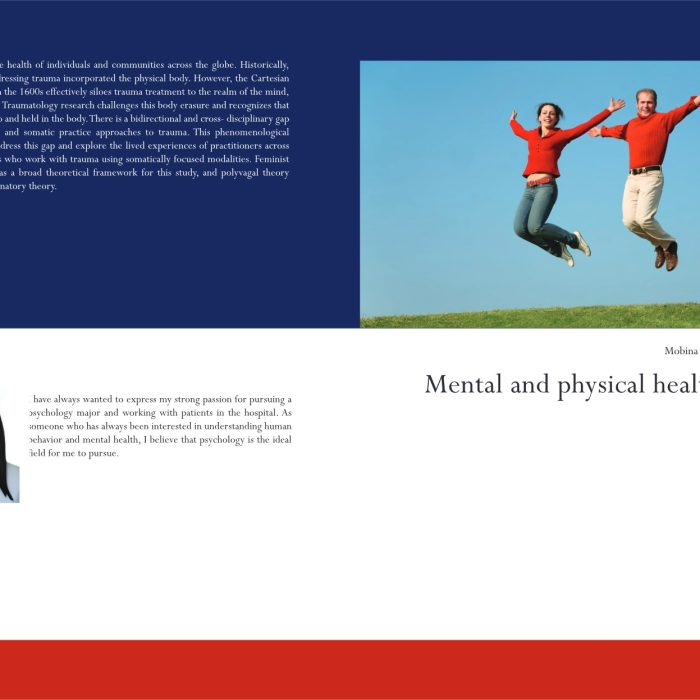کتاب TRX exercises on the functional factors of Parapelgia patients
۳۱۵,۰۰۰ تومان قیمت اصلی: ۳۱۵,۰۰۰ تومان بود.۱۵۷,۵۰۰ تومانقیمت فعلی: ۱۵۷,۵۰۰ تومان.
| تعداد صفحات | 67 |
|---|---|
| شابک | 978-620-6-84369-6 |
| انتشارات |

کتاب “TRX Exercises on the Functional Factors of Paraplegia Patients” یک منبع علمی و کاربردی است که به بررسی اثرات تمرینات TRX بر بهبود عملکرد فیزیکی و توانبخشی بیماران مبتلا به پاراپلژی میپردازد. این کتاب برای متخصصان توانبخشی، فیزیوتراپیستها و حتی بیماران مبتلا به پاراپلژی که به دنبال روشهای نوین در تمرینات بدنی هستند، یک راهنمای عملی و علمی بهشمار میآید.
محتوای کتاب:
این کتاب به تحلیل و ارزیابی چگونگی تأثیر تمرینات TRX (تمرینات مقاومتی با استفاده از تسمه) بر جنبههای مختلف عملکرد بیماران مبتلا به پاراپلژی میپردازد. TRX به دلیل استفاده از وزن بدن به عنوان مقاومت، به بیماران این امکان را میدهد که با کمترین فشار و به طور ایمن به تقویت عضلات و بهبود قابلیتهای حرکتی خود بپردازند. 🔄
فصلهای اصلی کتاب:
- مبانی پاراپلژی و چالشهای توانبخشی
در این فصل، به بررسی علل و عوارض پاراپلژی و چالشهای فیزیکی و روانی که بیماران با آنها روبهرو هستند، پرداخته میشود. 📘 - تمرینات TRX و تأثیرات آن بر عضلات و عملکرد فیزیکی
این بخش به نحوه عملکرد تمرینات TRX و تأثیر آنها بر تقویت عضلات مرکزی و اندام تحتانی، بهبود وضعیت ایستایی و تعادل بیماران مبتلا به پاراپلژی میپردازد. 💪 - اثرات روانی و اجتماعی تمرینات TRX بر بیماران پاراپلژیک
در این فصل، به تأثیرات مثبت روانی و اجتماعی انجام تمرینات TRX بر اعتماد به نفس و روحیه بیماران پرداخته میشود. 😊
ویژگیهای کتاب:
- تمرینات خاص برای بیماران پاراپلژیک
کتاب شامل تمرینات مناسب و شخصیسازی شده برای بیمارانی است که ممکن است محدودیتهای فیزیکی قابل توجهی داشته باشند. این تمرینات به تدریج و با رعایت ایمنی کامل، به بهبود عملکرد فیزیکی کمک میکنند. 🏋️♂️ - راهنمایی دقیق برای فیزیوتراپیستها و متخصصان توانبخشی
کتاب برای متخصصان فیزیوتراپی و توانبخشی، راهنماییهای علمی و عملی درباره چگونگی استفاده از تمرینات TRX در برنامههای توانبخشی پاراپلژیا ارائه میدهد. 📑
کتاب “TRX Exercises on the Functional Factors of Paraplegia Patients” یک ابزار ارزشمند برای کمک به بهبود کیفیت زندگی بیماران مبتلا به پاراپلژی است. این کتاب نه تنها به تمرینات بدنی بلکه به ابعاد روانی و اجتماعی توانبخشی نیز توجه میکند و به بیماران و متخصصان کمک میکند تا به نتایج بهتری دست یابند.
📘 پرسش و پاسخ درباره کتاب TRX Exercises on the Functional Factors of Paraplegia Patients
🔹 فصل اول: مقدمه
❓ ۱. هدف اصلی این کتاب چیست؟
🔹 این کتاب به بررسی تأثیر تمرینات TRX بر عملکرد بیماران مبتلا به پاراپلژی (فلج پایینتنه) پرداخته و نقش این تمرینات در بهبود حرکت، تعادل و کیفیت زندگی بیماران را ارزیابی میکند.
🔹 فصل دوم: آناتومی و آسیبهای نخاعی
❓ ۲. نخاع چه نقشی در بدن ایفا میکند؟
🔹 نخاع مسئول انتقال پیامهای عصبی بین مغز و سایر قسمتهای بدن است و نقش حیاتی در کنترل حرکات و احساسات دارد.
❓ ۳. آسیب نخاعی چگونه طبقهبندی میشود؟
🔹 آسیبهای نخاعی به دو دسته کامل (از بین رفتن کامل حس و حرکت در زیر محل آسیب) و ناقص (حفظ جزئی حس یا حرکت) تقسیم میشوند.
❓ ۴. پاراپلژی و کوادریپلژی چه تفاوتی دارند؟
🔹 پاراپلژی به فلج اندامهای پایینی اشاره دارد، در حالی که کوادریپلژی شامل فلج هر چهار اندام (دستها و پاها) میشود.
❓ ۵. چه عواملی موجب آسیب نخاعی میشوند؟
🔹 عوامل مختلفی مانند تصادفات رانندگی، سقوط از ارتفاع، ضربههای شدید و بیماریهای عصبی میتوانند باعث آسیب به نخاع شوند.
🔹 فصل سوم: روش تحقیق و تمرینات TRX
❓ ۶. TRX چیست و چگونه به بیماران پاراپلژی کمک میکند؟
🔹 TRX یک سیستم تمرینی با استفاده از وزن بدن است که باعث افزایش قدرت، تعادل و پایداری عضلات بیماران پاراپلژی میشود.
❓ ۷. تمرینات TRX چه تأثیری بر بیماران پاراپلژی دارد؟
🔹 تمرینات TRX میتوانند باعث بهبود تعادل، افزایش قدرت عضلانی، بهبود دامنه حرکتی و افزایش استقلال حرکتی بیماران شوند.
❓ ۸. روش جمعآوری دادهها در این تحقیق چگونه بوده است؟
🔹 اطلاعات از طریق آزمونهای عملکردی، اندازهگیری سرعت راه رفتن، بررسی کیفیت زندگی و تستهای آماری جمعآوری شده است.
🔹 فصل چهارم: تحلیل دادهها
❓ ۹. چه نتایجی از تحلیل دادهها به دست آمده است؟
🔹 نتایج نشان داد که تمرینات TRX به طور معناداری باعث بهبود تعادل، افزایش قدرت عضلات مرکزی، افزایش سرعت گامبرداری و ارتقای سلامت جسمی و روانی بیماران شده است.
❓ ۱۰. آیا کیفیت زندگی بیماران پس از تمرینات بهبود یافت؟
🔹 بله، شرکتکنندگان پس از انجام تمرینات TRX بهبود معناداری در سلامت جسمی، روانی و اعتماد به نفس خود تجربه کردند.
🔹 فصل پنجم: نتیجهگیری و پیشنهادات
❓ ۱۱. آیا تمرینات TRX برای همه بیماران پاراپلژی مناسب است؟
🔹 بسته به سطح آسیب و تواناییهای فردی، تمرینات TRX میتوانند برای بسیاری از بیماران مفید باشند، اما باید تحت نظر متخصص فیزیوتراپی انجام شوند.
❓ ۱۲. آیا TRX جایگزین سایر روشهای توانبخشی میشود؟
🔹 خیر، TRX یک روش مکمل در کنار فیزیوتراپی و سایر تکنیکهای درمانی است و نمیتواند جایگزین کامل روشهای سنتی توانبخشی شود.
❓ ۱۳. چه پیشنهاداتی برای بهبود برنامههای توانبخشی بیماران پاراپلژی ارائه شده است؟
🔹 استفاده از برنامههای ترکیبی شامل تمرینات مقاومتی، کششی، و تعادلی، همراه با پشتیبانی روانشناختی و اجتماعی توصیه شده است.
📌 این مجموعه پرسش و پاسخ خلاصهای از نکات کلیدی کتاب TRX Exercises on the Functional Factors of Paraplegia Patients را ارائه میدهد. امیدواریم مفید واقع شده باشد! 😊
| تعداد صفحات | 67 |
|---|---|
| شابک | 978-620-6-84369-6 |
| انتشارات |
محصولات مشابه
-
کتاب The realization of national spatial data infrastructure (NSDI)
۴۰۰,۵۰۰ تومانقیمت اصلی: ۴۰۰,۵۰۰ تومان بود.۱۷۳,۵۵۰ تومانقیمت فعلی: ۱۷۳,۵۵۰ تومان. -
کتاب Principles of Health Law
۱,۳۳۲,۰۰۰ تومانقیمت اصلی: ۱,۳۳۲,۰۰۰ تومان بود.۳۵۵,۲۰۰ تومانقیمت فعلی: ۳۵۵,۲۰۰ تومان. -
کتاب Mental and physical health
۴۰۰,۵۰۰ تومانقیمت اصلی: ۴۰۰,۵۰۰ تومان بود.۱۷۳,۵۵۰ تومانقیمت فعلی: ۱۷۳,۵۵۰ تومان. -
کتاب Cinema and Architecture
۸۱۴,۵۰۰ تومانقیمت اصلی: ۸۱۴,۵۰۰ تومان بود.۲۷۱,۵۰۰ تومانقیمت فعلی: ۲۷۱,۵۰۰ تومان.












